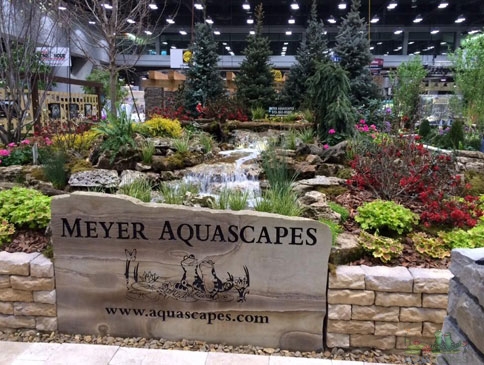Aquascaping, the art of designing and arranging aquatic plants, rocks, and driftwood in a harmonious underwater landscape, has taken the backyard pond installation hobby by storm. It’s more than just a fish pond; it’s a captivating aquatic garden that brings serenity and beauty to any space. Whether you’re a seasoned aquascaper or a beginner looking to dip your toes into this creative endeavor, this blog post will provide you with expert tips and inspirational ideas to help you bring your dream aquascapes to life.
Understand the Basics of Dream Aquascapes
Before diving into the creative process, it’s essential to grasp the fundamental principles of aquascaping. This will help you make informed decisions throughout the journey. Here are some key concepts to consider:
a. Hardscape and Softscape: Hardscape elements, such as rocks and driftwood, form the backbone of your aquascape. Softscape elements, like aquatic plants, provide the greenery and life in your underwater world.
b. Balance and Symmetry: Achieving a balanced and symmetrical layout can create a sense of harmony in your aquascape. However, don’t be afraid to experiment with asymmetry for a more natural and dynamic look.
c. Focal Points: A well-placed focal point draws the viewer’s eye and adds visual interest to your aquascape. Consider using a unique rock formation or a captivating plant as the centerpiece.
Choose the Right Base
Selecting the appropriate area is crucial for creating a successful aquascape. Consider factors such as size, shape, and material. A larger area provides more space for creativity, while unique shapes like rimless cubes or water features can add a distinctive touch to your setup. Opt for high-quality Aquascapes products ensure durability and clarity.
Selecting the Perfect Substrate
The substrate serves as the foundation for your aquascape, so choose wisely. Some popular options include gravel, sand, and aquatic soil. Fine-grained substrates are ideal for growing carpeting plants, while coarser ones can complement larger rock structures. Ensure that the substrate is thoroughly cleaned before adding it to your pond to avoid cloudiness.
The Art of Aquatic Plant Selection
Aquatic plants are the heart and soul of any aquascape, so carefully curate your plant selection. Consider factors such as growth rate, height, and coloration. Low-maintenance plants like Anubias and Java Fern are perfect for beginners, while experts might experiment with challenging species like Hemianthus callitrichoides (dwarf baby tears) for a lush carpet effect.
Mastering Hardscape Arrangement
Your choice of rocks and driftwood can drastically influence the overall aesthetics of your aquascape. Spend time experimenting with various arrangements before settling on the final design. Stack rocks to create intriguing formations, or position driftwood to mimic the natural flow of a river. Aim for a layout that conveys a sense of depth and realism.
The Role of Lighting
Lighting not only illuminates your dream aquascapes but also affects plant growth and the behavior of fish. Opt for LED lights with adjustable brightness and color spectrums to simulate natural sunlight. Provide a lighting period of 8 to 10 hours daily for plants and fish, and consider using a timer for consistent and stress-free lighting cycles.
Understanding Water Parameters
Maintaining stable water parameters is essential for the health of your aquatic plants and inhabitants. Regularly test and adjust parameters such as pH, temperature, ammonia, nitrite, and nitrate levels. Research the specific requirements of your chosen plant and fish species to provide them with an optimal living environment.
The Art of Aquatic Scaping Techniques
Aquascaping is an ever-evolving art form, and mastering various techniques can elevate your design to the next level:
a. Dutch Style: Characterized by colorful and densely planted arrangements, the Dutch style utilizes strong lines and contrasts between plant species.
b. Nature Style: Emulating the beauty of a natural landscape, this style focuses on creating a balanced, asymmetrical layout that mimics underwater environments.
c. Iwagumi Style: Originating from Japan, this minimalist style features only a few rocks as the main focal points, surrounded by a carpet of low-growing plants.
Adding Fish and Invertebrates
Once your aquascape is established, carefully select compatible fish and invertebrates to complete the ecosystem. Consider their behavior, size, and water parameter preferences. Community fish, such as tetras and rasboras, are great additions for peaceful setups. For more advanced pond additions, shrimp and snails can add an extra layer of interest and help with algae control.
Ongoing Maintenance and Care
Aquascaping is an ongoing process that requires regular maintenance. Establish a routine for trimming plants, removing debris, and checking water parameters. Conduct regular water changes to keep your pond’s ecosystem stable and healthy. A well-maintained aquascape will continue to flourish and captivate for years to come.
Creating your dream aquascapes is an exhilarating journey that combines artistry, creativity, and scientific knowledge. By understanding the fundamental principles, choosing the right materials, and implementing various aquascaping techniques, you can design a stunning underwater landscape that brings tranquility and beauty to your home or office space.
Remember to be patient and enjoy the process. Aquascaping is not only about the final result but also the joy of nurturing and witnessing a living work of art flourish over time. So, let your imagination soar, and let the experts’ tips and inspiration guide you in creating an awe-inspiring aquascape that reflects your unique vision and passion for aquatic beauty. Happy aquascaping!
Check out our store for all your water gardening needs! Aquascape products are Aquascape Inc. Certified.
Thanks for reading at Meyer Aquascapes! We hope you’ve enjoyed our post on garden pond design. Please leave a comment below if you liked it or have any questions. We’d love to hear from you! Thanks for stopping by!


 Meyer Aquascape
Meyer Aquascape